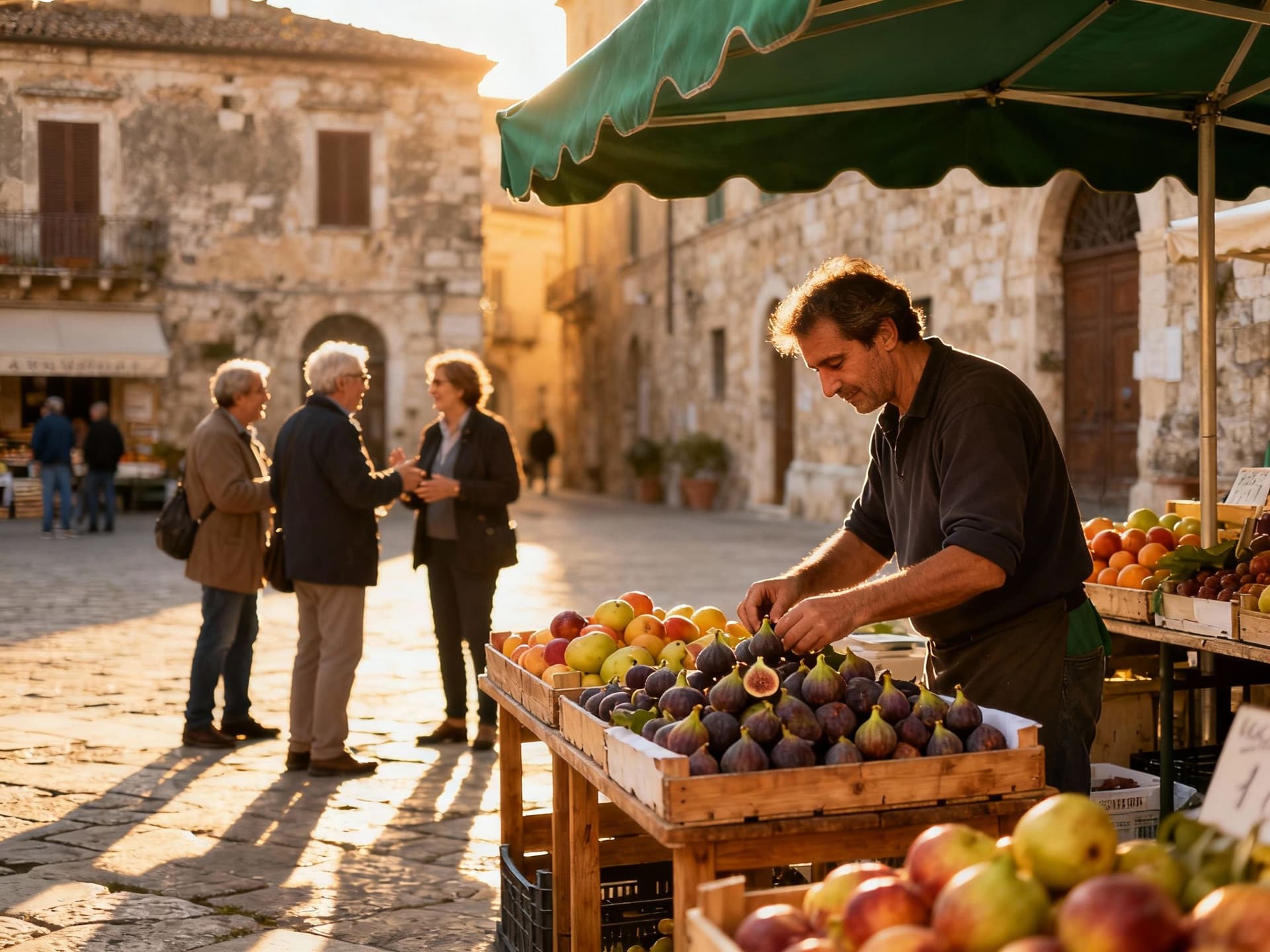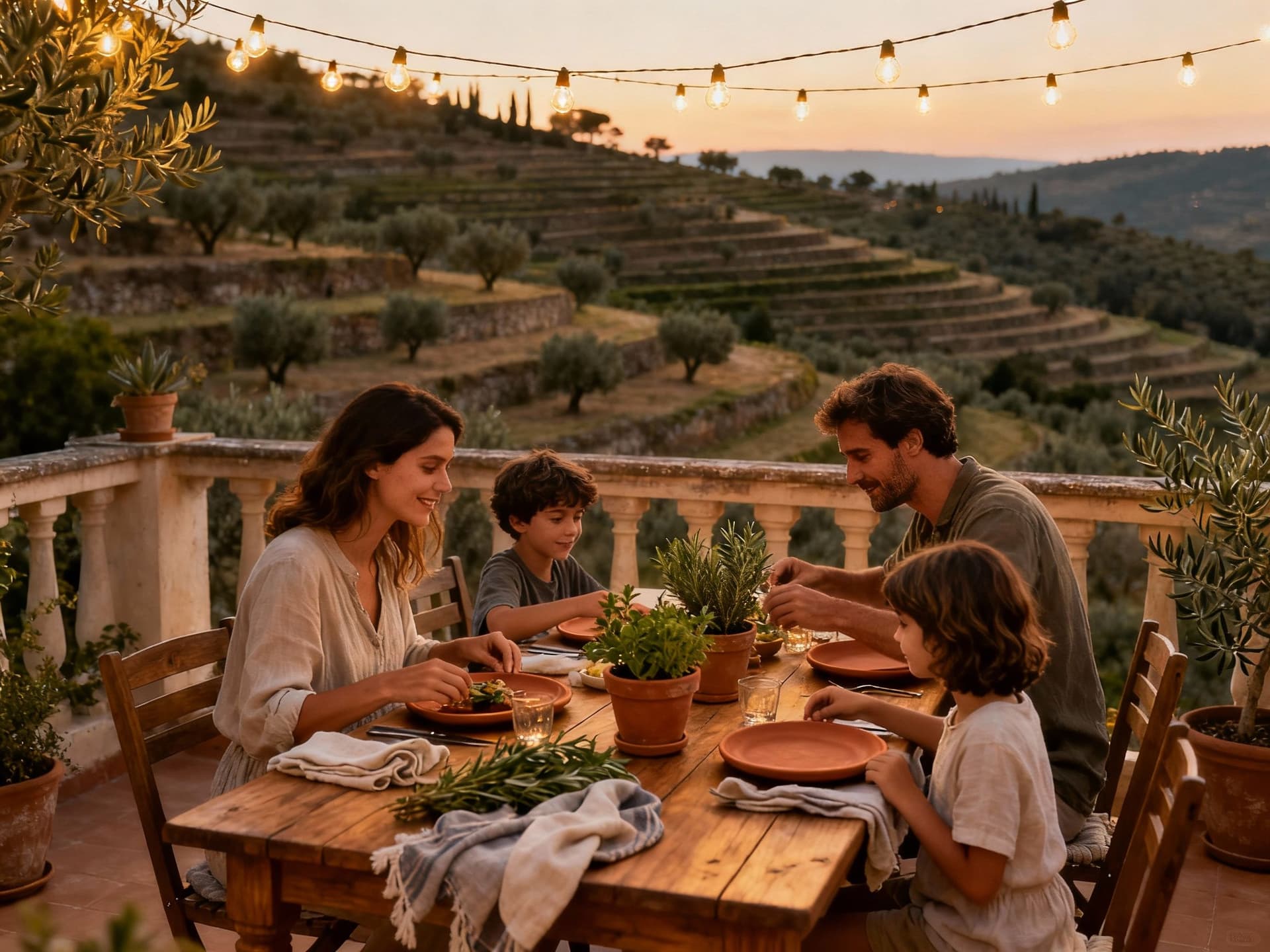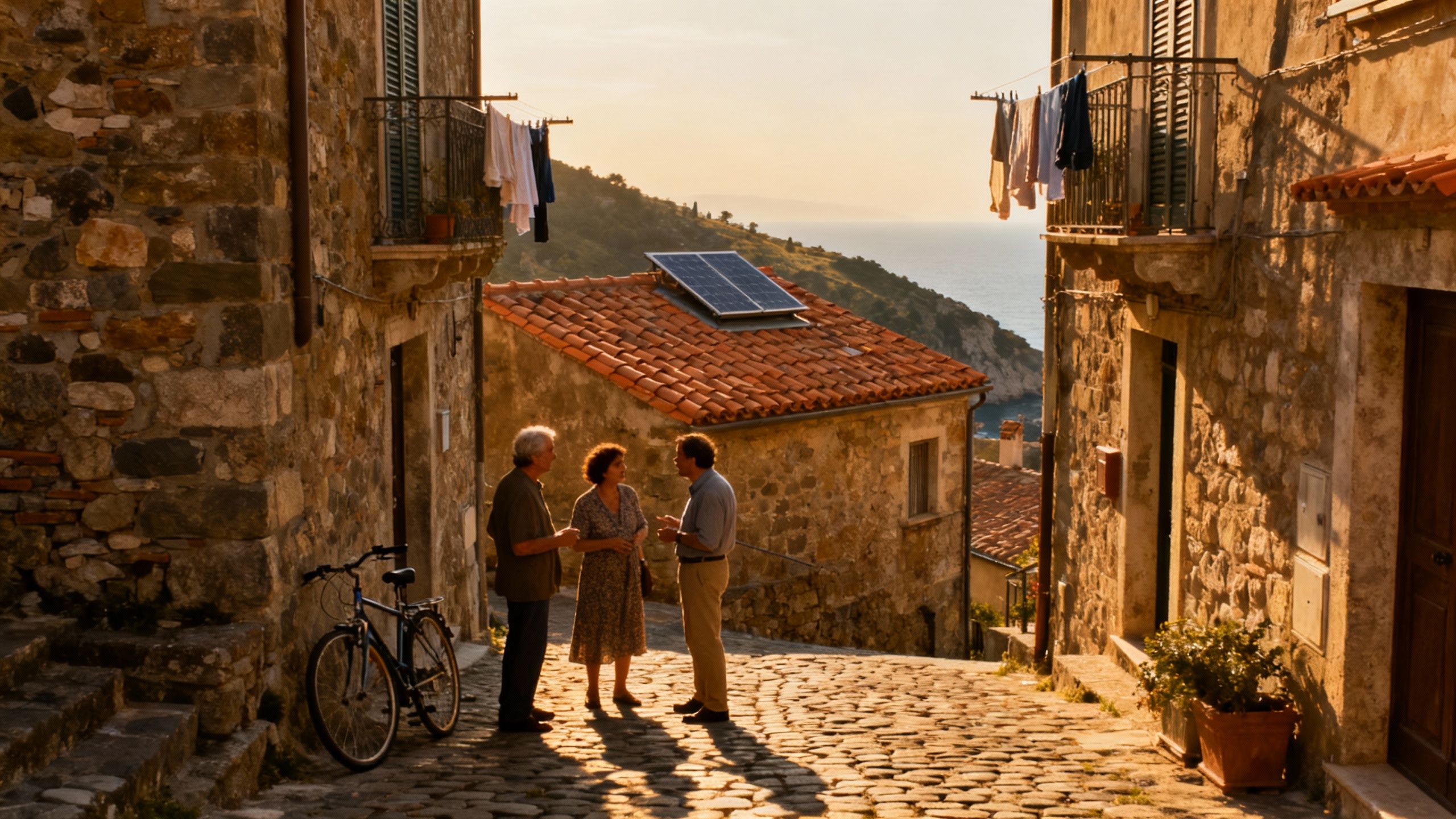Seasonal Living & Hidden Costs: Buying in Italy's Green Regions
Fall in love with Italian daily life—markets, seasons and craft—while learning region-specific market trends, taxes (IMU, registration tax) and practical steps to buy sustainably.
Imagine waking before dawn to the smell of fresh espresso, olive trees silvering in morning light and a slow, practical rhythm that shapes every day. In Italy, place and season choreograph life: markets pulse on market day, shutters close for riposo, and neighbourhood cafés become living rooms. For buyers who care about biodiversity, natural materials and homes that sit lightly on the land, Italy offers both poetic rewards and practical surprises. This review blends sensory scene-setting with the concrete realities—market trends, taxes and local practice—so you arrive ready to choose a home and a life that fit together.
Living the Italian lifestyle — mornings, markets and seasons

Daily life in Italy moves with seasons and place. In coastal Liguria you’ll hear fishermen’s voices at dawn and taste sea-sweet salt on focaccia; in Tuscany or Umbria, stone lanes, hilltop churches and olive harvests mark the year. Cities like Milan and Bologna vibrate with aperitivo culture and design energy, while smaller towns center around weekly markets and craft workshops. Recent national data show modest, steady growth in house prices and transaction volumes — a reminder that lifestyle choices sit alongside an active, regionally varied market. (Source: ISTAT and regional market reports.)
Neighborhood spotlight: Trastevere (Rome) to Oltrarno (Florence)
Picture winding cobbled lanes, a tiny bar where the owner remembers your order and craftsmen who still restore furniture by hand. Trastevere and Oltrarno retain an intimate pace: mornings for errands, afternoons for restoration work, evenings spent under strings of light. For eco-minded buyers, these neighbourhoods often reveal hidden courtyards, communal gardens and small-scale artisans using local timber and stone. Choosing a neighbourhood like this means buying into a pattern of daily life as much as a house—expect community rhythms, local festivals and a deep connection to place.
Food, markets and seasonal living
Italian seasons are best learned at the market: figs and ripe tomatoes in late summer, chestnuts in autumn, citrus in winter. Markets are social infrastructure—neighbors exchange news and recipes while buying produce—and they anchor the slow, local consumption that supports biodiversity and small producers. For buyers planning gardens or small orchards, microclimate matters: southern coastal sites extend outdoor living, while mountain villages demand insulation and passive-solar thinking. Integrating a property into local food systems gives everyday life flavour and reduces ecological footprint.
- Lifestyle highlights to seek in Italy
- Weekly markets (mercato) and food stalls in neighborhood squares
- Small artisan workshops — carpentry, ceramics, stone restoration
- Communal olive groves, vineyard terraces or municipal community gardens
Making the move: practical considerations for eco-minded buyers

Dreams of terracotta terraces must be balanced with a clear view of purchase costs, taxes and renovation realities. Italy’s housing market has shown modest price rises and brisk transaction volumes across 2024–2025, so timing matters regionally. Practical due diligence includes cadastral checks, energy performance certificates (APE), and understanding local municipal rates for IMU and TARI. Working with a bilingual notary and an agent experienced in green renovations will save time and protect your stewardship goals.
Property styles and what they mean for living
Stone farmhouses, city apartments with thick masonry walls, and modern eco-builds each shape comfort and maintenance differently. Stone homes have thermal mass and storied character but often need careful insulation and sympathetic upgrades; apartments in historic centres limit exterior changes but offer community life and walkability. Newer eco-homes may include solar, rainwater harvesting and green roofs—features that reduce running costs but require technical certification in Italy. Match property type to your climate, seasonality and low-impact goals before committing.
Working with local experts who know the lifestyle
A local agent who understands seasonal rental rhythms, municipality rules and traditional building methods becomes a lifestyle partner. Seek agents who can introduce you to local craftsmen, help secure APEs, and facilitate applications for energy-efficiency incentives. Notaries (notaio) in Italy are indispensable—legal transfer, cadastral accuracy and tax declarations run through them. For non-residents, mortgage terms are usually more conservative; pre-approval and currency planning are practical steps to solidify an offer.
- Steps to align lifestyle aims with the buying process
- Get pre-approval (or proof of funds) and clarify financing limits for non-residents.
- Commission a technical survey (stato di fatto) and request the APE energy certificate.
- Ask the notary for the cadastral value (rendita catastale) and local IMU/TARI estimates.
Insider knowledge: expats’ real-talk and regional secrets
Long-time expats often say the surprise isn’t the cost but the tempo: services are local, rules vary by comune, and relationships unlock many practicalities. Expect to learn who in town can fix a tile roof, where to source reclaimed chestnut beams, and which craftsmen accept sustainable materials. Regional markets behave differently—Milan and coastal hotspots command premiums, while inland villages can reward buyers with lower entry prices and generous incentives for renovation.
Language, culture and community integration
Italian neighbours appreciate effort: learning basic Italian, attending local fêtes, and visiting the market will speed acceptance. Many expats join language exchanges, volunteer with agrarian cooperatives or enroll in seasonal harvests to deepen ties and understand land stewardship. For buyers aiming to claim prima casa benefits, municipal residency deadlines (typically 18 months) are practical constraints that influence tax outcomes and living plans.
Long-term stewardship: how life changes after purchase
Over five years, many buyers transform a project into a regenerative home: adding insulation, planting native hedgerows, or restoring terraces for water management. Fiscal incentives for energy upgrades still exist but require compliant contractors and correct paperwork. Plan maintenance budgets for olive groves, roof tiles and septic systems where relevant; these recurring costs are part of rural stewardship and often overlooked in search lists.
- Common surprises expats report
- Local permit delays for renovations and the need for 'as built' surveys
- Seasonal business hours and holiday closures that affect contractors
- Variations in municipal IMU rates—small differences that add up annually
Italy offers a rare combination: places where life feels like a crafted ritual and property can be a tool for ecological care. National statistics point to modest price growth and healthy transaction volumes through 2024–2025, yet regional differences and tax rules shape real costs and opportunities. Start with a values-based wishlist—walk neighbourhoods at different hours, visit markets, and meet local artisans—then bring in an agent and notary who understand sustainability and local practice. With careful due diligence and a respect for seasonal rhythms, your Italian home can be both a sanctuary and a responsible act of stewardship.
British expat who traded Manchester for Mallorca in 2017. Specializes in guiding UK buyers to luxury Spanish estates with clear navigation of visas and tax.


